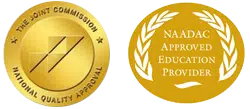While the evidence that medications can help treat substance abuse and addiction has existed for decades, political opposition has often limited the treatment options available to those who suffer from addiction. After years of activism and advocacy on behalf of people who struggle with substance abuse disorder, these medications are increasingly becoming available to patients across America. However, the medications that treatment facilities use vary widely in the roles they play in helping people recover.
How Do Medications Help Substance Abuse?
Different medications help treat substance abuse disorder in different ways. Some replace the drug entirely and can even create a high if misused, but these are subject to the most stringent regulatory controls and are used in the short term to help people ease through withdrawals. Others eliminate withdrawal symptoms altogether or inhibit the body from processing the drug to prevent it from producing a high. Perhaps the most important medications in the treatment of substance abuse are those that can save an overdosing person from the brink of death.
Detox Medications
Methadone is one substance that sees inconsistent use in treating opioid addictions. It functions by stimulating the same opioid receptors as drugs like morphine, heroin, and fentanyl. However, it’s far, far weaker and administration occurs in controlled, supervised quantities.
While it might seem strange to treat opioid addiction with what is essentially an opioid, the purpose is to use small amounts of the drug in a safe setting to wean the brain off of opioids. This has measurable, proven benefits for the recipient, such as reduced cravings once the program ends as well as a quicker, smoother recovery following the end of withdrawals.
Buprenorphine is a more ideal medication for treating opioid abuse. It simultaneously activates and blocks opioid receptors within the brain as the patient takes it sublingually, or below the tongue. The result is that the drug reduces all withdrawal effects and symptoms, and a formulation of buprenorphine with naloxone prevents the user from abusing it by injecting it into their veins since the naloxone would cause a withdrawal response.
Acamprosate helps treat alcohol addiction by making the body function more normally after a person begins to detox. The effect of detoxing from alcohol can be so severe as to send the body into seizures as the nervous system goes into overdrive, so medication that combats these problems is invaluable to those suffering from addiction.
Relapse Prevention
Naltrexone is effective for treating both opioid addiction and alcohol addiction. A long-acting injection serves to block the receptors that would cause an opioid high or alcohol-related euphoria, which dampens the appeal of taking either drug. If someone on Naltrexone tries to use an opioid drug, they should experience no effect.
Disulfiram is an example of a medication that makes drug abuse unpleasant; it disrupts the metabolization of alcohol, which makes it uncomfortable to drink.
Overdose Treatment
Naloxone is the center of many debates in drug treatment, as a timely injection can stop an opioid overdose and save someone’s life. Thankfully, many states have recently updated their laws to allow easier access to this life-saving drug.
Learn More with Baystate Recovery Center
Baystate Recovery Center is dedicated to addiction advocacy, awareness, and treatment. If you have more to learn or need help getting clean, get in touch today for access to first-class substance abuse care.
Baystate Recovery Center, a clinically Infused 12-Step Treatment Center for Drug and Alcohol Addiction, was founded by two partners in addiction treatment services, John Checchi and Michael Wilson.



